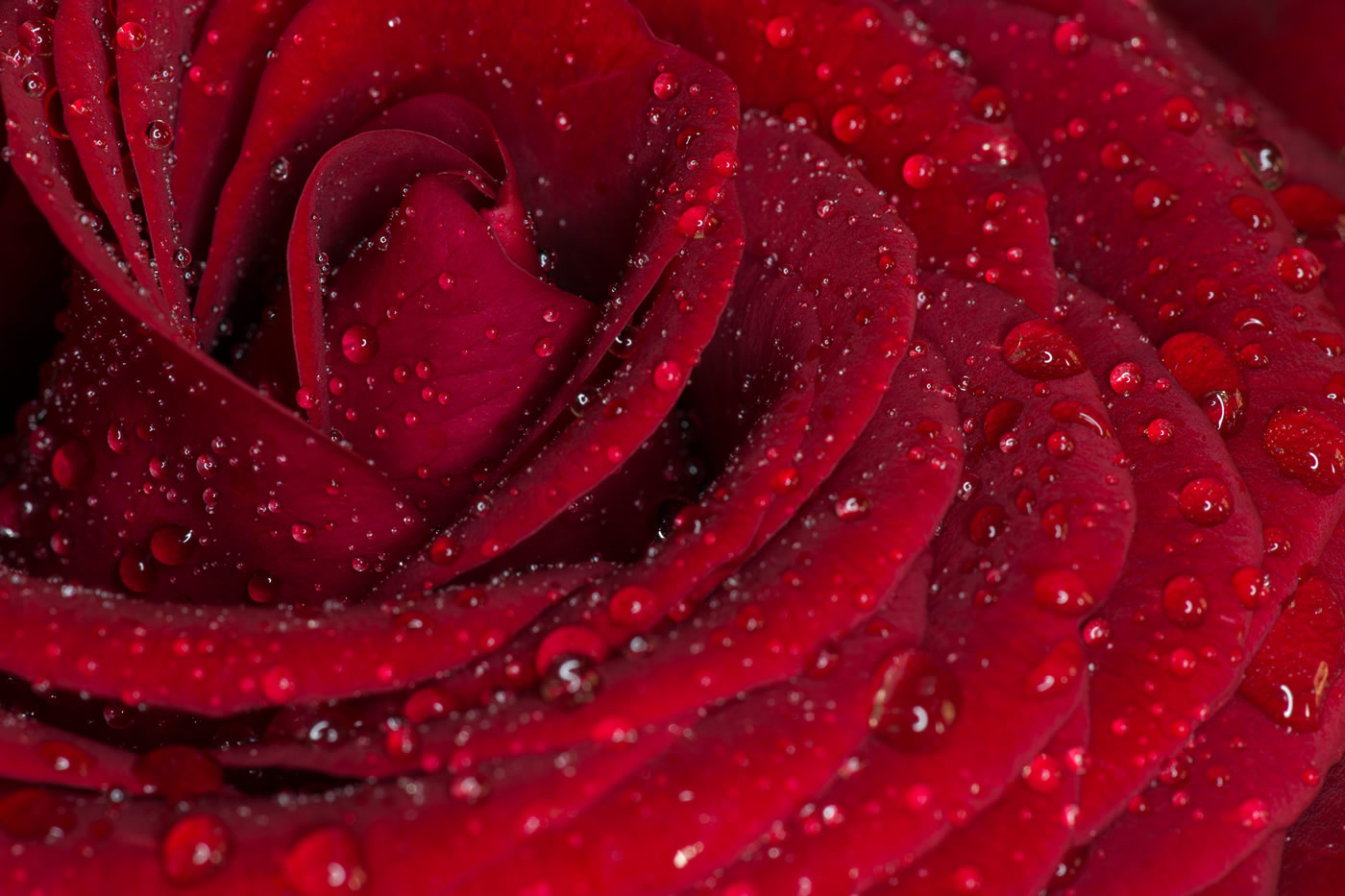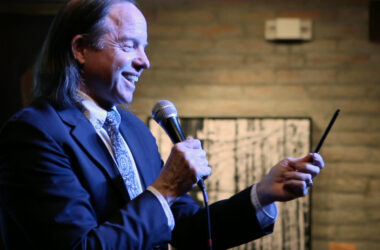Hi, welcome back to the Lam Rim. We’re starting episode number 9. I like to call it ”A Visit to the Middle of the Sun”. We’ve been talking about something which is big enough and powerful enough–it’s like a nuclear bomb used to clean ketchup off of your shirt or something. And I’m not exaggerating. I want you to think like that. Imagine–so today in America, it’s Independence Day. I’m speaking on Independence Day. Oftentimes we will go have a picnic with our family. It’s the middle of summer. And the American kids will eat hot dogs or hamburgers and they will put too much ketchup on, and a little a little drip of ketchup will come here. Imagine that to clean it, the mom sends the shirt or the blouse to the middle of the sun [inaudible] to clean a little drip of ketchup, red ketchup. I know it sounds like a weird image, but I’d like you to try to think of it. I don’t know what to compare it to. Yeah, I don’t know. Just put some tiny thing in the middle of the sun, okay?
[su_icon icon=”icon: link” color=”#ff1259″ size=”20″ shape_size=”12″ url=”https://youtu.be/oZb5FBvLtjo?t=1m42s” target=”blank”]Video[/su_icon]So we’re going to visit the middle of the sun today, and I’m happy to announce we have just reached the third and final section of the lam rim–the steps to the path of enlightenment. As of right now we are about to cross over into the activities of a bodhisattva. We are about to cross over into thinking and acting like a bodhisattva, which is the highest capacity person. KYES BU CHEN PO–which means “a person of great capacity”. Those of you, especially those of you who have followed this lam rim for the last ten years, you should be super happy that you survived and that I survived to get to the last part.
We’re on the last part. It’s the last third. Now, those mathematicians among you should be thinking “well, Geshe-la, you just said we have 25% to go so why is that the last third?” And the answer is that the treatment by Pabongka Rinpoche on the last two days of the lam rim is too short. His presentation of meditation and his presentation of seeing emptiness–the last two perfections of the six–is not very long. And I don’t know what happened. I mean, sometimes it’s like the sponsor came to him and said “we’re going to be out of food in two days, wrap it up!” It’s possible–maybe it is a mystical message from Tara. Maybe I don’t know, maybe he had another appointment in another town, but if you ask me, Pabongka Rinpoche made the last two parts shorter because Je Tsongkapa had covered them in his Great Lam Rim. ”The Great Book on the Steps of the Path to Enlightenment”–the Lam Rim Chenmo. Tsongkapa did such a great job that I think, I can just see Pabongka Rinpoche saying, “you know guys, there’s not much reason for me to teach this part because Tsongkapa already taught it, and he did extraordinary”.
[su_icon icon=”icon: link” color=”#ff1259″ size=”20″ shape_size=”12″ url=”https://youtu.be/oZb5FBvLtjo?t=4m13s” target=”blank”]Video[/su_icon]There’s many many stories about Tsongkapa writing those last two parts and I’m very happy that we’re going to do them together. So we’re going to finish this lam rim series with amazing teachings on meditation and emptiness. So that’s why this part about the steps of the path for people who have bodhichitta–for Bodhisattvas–is not as long as it might have been.
So here we go. Let’s read the Tibetan. GSUM PA SKYES BU CHEN PO’I LAM GYI RIM PAR BLO SBYANG BA LA. Let’s train our hearts in the steps of the path for people of great capacity. People who are bodhisattvas. THEG CHEN GYI ‘JUG SGO SEMS BSKYED KHO NAR BSTAN PA PHAN YON DANG BCAS PA. He says we’re going to cover this bodhisattva’s way of life, we’re going to cover it in three different steps.
(1) THEG CHEN GYI ‘JUG SGO. If you want to enter the bodhisattva path, there’s only one way to get there. And it’s by reaching a certain state of mind. If you want to get enlightened, if you want to have a chance to get enlightened, if you want to have a chance to help the world, there’s only one way. You have to get bodhichitta. You have to get this desire to reach enlightenment to be able to help countless beings.
Now, I want to talk about countless. Bodhichitta is aimed at countless living beings. It’s not aimed at all the people in your city, all the people in your country, or all the people on this planet. Break out … if we want to send the virus to the middle of the sun, if we want to visit the middle of sun, break out of this idea that we are working for all the people on this planet. We are not. Break out of this idea that we are trying to help all the fish, all the birds, and all the animals that walk on the dry land. We’re not. It’s not the point. We are covering the entire universe. We are deciding today that I would like to help every living thing in the universe. Every little virus, bacteria, every whale, every human in the universe. So go out at night in Sedona, or outside of Sedona–Rim Rock is better–and look at the stars and just try to imagine.
[su_icon icon=”icon: link” color=”#ff1259″ size=”20″ shape_size=”12″ url=”https://youtu.be/oZb5FBvLtjo?t=7m03s” target=”blank”]Video[/su_icon]So first, you can’t practice the bodhisattva’s way of life if you don’t expand your mind to that, to that goal. And if you actually experience it, which takes some practice, if you’re actually able to get bodhichitta then the things you have to do in this world are nothing–it’s insignificant. To help all the people in this world, it’s nothing. It’s easy. I want to tell you the benefits of thinking like that. That’s the first step. BYANG CHUB TU SEMS BSKYED PA’I TSUL. Second step. How do you get to this breakthrough–mental breakthrough. How do you perceive the entire universe and all the beings in it, and then develop love for them? Is it even possible? Is it even possible–that’s the second step. Third step. SEMS BSKYED NAS SPYOD PA LA SLOB TSUL LO. We’re going to learn how to act like a bodhisattva. Once you have this hope to become a bodhisattva, well then practically what am I supposed to do? How do I spend the hours of my day if I want to act like a bodhisattva? What do I do? What’s my schedule going to be?
[su_icon icon=”icon: link” color=”#ff1259″ size=”20″ shape_size=”12″ url=”https://youtu.be/oZb5FBvLtjo?t=8m49s” target=”blank”]Video[/su_icon]Alright. Here’s the first one. DANG PO NI, DE LTAR SKYES BU CHUNG ‘BRING GI SKABS SU NGES ‘BYUNG GI BSAM PAS KUN NAS BSLANGS. So now that we’ve gone through the steps of the path for people of lower capacity and medium capacity, at least you should have this feeling that really this life is pain, really this life is trouble. The virus is kind of just making it obvious, but it’s always been like that. There’s always been a virus called death. This virus is the new one, it’s much smaller, but at least now we’re all thinking about it. LHAG PA’I BSLAB PA GSUM LA ‘BAD PAS. Then we were supposed to work on the three extraordinary trainings. 1) Treat other people well. (2) Spend time in meditation. (3) And then try to see that things are not coming from their own side.
‘BAD PAS RANG GCIG PUS THAR BA’I GO ‘PHANG THOB TZAM DANG ‘KHOR BA LAS LDOG TZAM ‘BYUNG. You can reach nirvana yourself and you can step out of the Wheel of Life. If you practice those attitudes you can–it’s possible. We already taught you, we’re finished with that. DE TZAM GYIS MI CHOG. But I don’t want you to stop there. I don’t want you to stop there, I want you to … there’s bigger fish to fry. There is much much bigger fish to fry. Don’t stop there. SPANG BYA THAMS CAD MA SPANGS. If you just stick to what I taught you so far, you’re not going to clean your heart of all the unclean things there. THOB BYA YON TAN THAMS CAD KYANG YONGS SU MA RDZOGS PAS. And you haven’t reached all the highest spiritual qualities you could have reached. MA RDZOGS PAS. Therefore RANG DON DANG, GZHAN DON YANG NYI TSE BA LAS MI ‘BYUNG NYI TSE BA–it’s a very disheartening word here, it’s a very sad word here. It says, “you can work on those paths I taught you so far, you can work on all those meditations I taught you so far, but the amount of good you will do for yourself and for others is only a tiny amount of what you need to do”.
[su_icon icon=”icon: link” color=”#ff1259″ size=”20″ shape_size=”12″ url=”https://youtu.be/oZb5FBvLtjo?t=11m29s” target=”blank”]Video[/su_icon]NYI TSE BA means “it’s only a tiny amount of what you should be doing”. And by the way, the most common use of that word is the Tibetan word for “hell on earth”, which is very strange. So there’s the big hell that people can go to, but I always think of a person who got in a car accident and the car blew up and they’re wrapped in fire. In the scriptures that’s called NYI TSI BA’I DMYAL BA–a little piece of hell in this plane of reality. And so this word NYI TSI BA means “just a tiny piece”, and here he says, “you want to help yourself and you want to help other people?” “Everything I taught you so far for 10 years is NYI TSI BA–it’s just a tiny fraction of what you could be doing and now we’re ready to start the serious stuff.”
“Well Geshe-la, why did we spend 10 years doing the NYI TSI BA–the little stuff–why didn’t we just go to the higher stuff?” Because the little stuff is a staircase that helps you reach the higher stuff. You can’t reach the higher stuff unless you do the other two parts–unless you practice all the steps in lam rim in their proper order you would never get to the bodhisattva part. So you can’t just say, “I don’t want it”. Part of the bodhisattva’s way of life is to master the lower path that helped you get there. And you never reject them, you just grow out of them.
MI ‘BYUNG ZHING SLAR THEG CHEN LA GZHI NAS ‘JUG DGOS LA. This is an idea in Buddhism that as soon as you’re ready, and as soon as you have the preparation, you should jump straight into the bodhisattva’s way of life, because if you don’t–you’re going to have to do it again anyway. So, sooner or later you have to go here. It maybe takes this life, maybe it would be later in this life. People come up to me from time to time and say “I’m going to take a break from this dharma–I feel like I need to take a break”. “I got other stuff I have to do right now.” “I have a big project at work, or I’ve got family stuff going on and I need to take a break.” I told one of my teachers that once in India, I remember, 45 years ago. And I said, “I need to take a break” and they looked at me and said, “yeah, okay, but you’ll be back”. You’ll be back because there’s no place else to go. You will be back. You will come back to this because you need to come back to this. Life will bring you back here because that’s how life is. You need the lam rim. Life will always bring you back to the lam rim. Unless you die, and it still will take you back to it later. SLAR means “you have to come back again”. SLAR THEG CHEN LA GZHI NAS GZHI NAS means “you’re going to waste a lot of time if you have to come back to it”. You might as well get it done now instead of coming back to it later. The next picture here is a little something I want to do with you in this episode, episode 9.

I call it “A visit to the Middle of the Sun.” So in this picture … I tried to find a picture that is close to what it feels like to get bodhichitta. So this picture it looks a little … we were saying, me and Seiji and Tim, we were saying it’s a little new-agey. It looks like it was painted in Sedona, Arizona. It feels a little new-agey but let me say something, if you ever get to bodhichitta it will feel… this picture is very close. This picture is kind of close. Can you can you leave it up just for a minute? This picture is not crazy and it’s not some kind of hippie thing. When you reach bodhichitta–real bodhicitta–it feels a lot like this. So maybe you want to make a copy of this picture. We paid for it already. So you could use it at home. You could keep it at home. You could keep a picture like that. Maybe put it on your screensaver on your phone. It’s pretty close to what it feels like to get bodhichitta.
[su_icon icon=”icon: link” color=”#ff1259″ size=”20″ shape_size=”12″ url=”https://youtu.be/oZb5FBvLtjo?t=16m43s” target=”blank”]Video[/su_icon]If you keep listening to this part it will help destroy the virus. I believe it will help destroy the virus. It’s like a nuclear weapon.
So I would like to take you on a little trip just for fun, maybe five minutes. Let’s review what it feels like when you first achieve real bodhicitta. So we’re not talking about estimated … what do you call it? Partial bodhichitta, or trying to feel like you have bodhichitta. Let’s talk about the real thing. The day that you see emptiness directly and you experience bodhichitta directly, let’s just go through it because it’s good luck. And it’s an atom bomb–if you keep working on it, if you keep working on this, feeling how it feels, if you keep listening to this part it will help destroy the virus. I believe it will help destroy the virus. It’s like a nuclear weapon, and the virus is like a ketchup stain. So here we go. Let’s just try to imagine for five minutes what it feels like to reach bodhichitta. Here we go.
Let’s take ten slow breaths.
Focus on the exhales–long exhales, don’t worry about the inhale, your body will breathe.
So please imagine that you have just seen emptiness directly. And you come out of that direct perception, and you come back to what we can call “normal meditation”–which is still not in the world. You’re in a deep state of meditation, you are still on your cushion. Your eyes are closed.
Then suddenly in front of your mind comes the image of your mother. It’s your mother. A very very perfect image of your mom. Living image. It actually is your mother. Maybe as you best remember her. She is looking like that right now. She’s gazing at you. She’s gazing into your eyes. Even though it feels like she’s in the front part of your mind, she’s looking into your eyes with great love and also a sense of need. She deeply needs help. She’s in trouble in a way–like she’s jumping off the Titanic or something and she’s looking at you with those eyes. She says, “I need you, I need help”.
And then you say to her out loud in your heart, “don’t worry Mom, I’ll take care of you and I will be strong enough to take care of you.” “You don’t need to be worried.” “I will have the power to help you and I will do it, I promise.”
And then her picture sort of fades away in the front of your mind and suddenly there’s your father’s picture; and you’re looking at your father. He’s got that same look in his eyes. It’s kind of expectant, but also afraid. So he’s looking to you like, “can you help me?” “Things are getting hard in life, life is hard now.” Then you say, “Dad, don’t worry I’m on it!” “I’m studying lam rim. I’m studying a lot about emptiness, and actually I know I will have the tools to help you soon.” “So don’t worry, I’m on it, I’m taking care of it.” “You don’t have to be afraid, you don’t have to worry, I know what to do and I’m doing it.” “Everything’s going to be alright, so don’t worry!”
And then maybe someone else close in your life–your wife, your husband, or one of your children–their picture comes up in the front of your mind. Just their face. And they’re also looking at you like, “can you help me?” “Things are bad, things are really bad!” “Things are deadly, there’s no other hope.” “Can you help me?”
And you say, “I got it covered, I’m taking care of it; I can.” “I will have enough power to take care of you.” “You really don’t have to worry.” “I know what’s going on; I know your situation, I know what this life is like and I will be taking care of you completely.” “You don’t have to worry; you really don’t have to worry.” “I will take care of it.”
And then that face fades away and then you can start going through faces of people you know. Close people, close family–uncles, aunts, brothers, sisters, nephews, and nieces. One by one, you bring them up and you comfort them; and you say, “truly I will take care of it.” “You will have nothing to worry about.” And in this way we finish all the people you know; all the people you ever met in your life.
Then you start working on all the people that you haven’t met and all the people around in this world. Start with your own neighborhood. Go to the city, the whole city, and you know, it’s not like you can cover everybody, but take a person here and take a person there. Take it to the shores of this continent that you live on. Cover everybody.
And then go further; to other continents, and in this way we cover all the people in this world. Just sitting here. And then you can start on the animals in this world, on the fish. I’m not talking about types of animals, I’m talking about helping each individual animal. Each one looks at you. Each one is expecting. Each one is afraid. Each one gets your personal guarantee. “I’m on it; I will take care of it”. Just imagine going through every creature–tiny creatures at the bottom of the sea, tiny creatures in your bloodstream. Meet each one; talk to them. And when you finish all the living things on this world, we will start on the next world.
I don’t know where the next world is. I don’t know if it’s Alpha Centauri? Maybe; it’s so many light-years away. Go there and start doing the same meditation for all the people in that world, and in this way we cover every world in the whole universe. The karma of meeting, one-by-one, each of seven billion human beings–and trillions of other creatures on one planet–and then covering as many planets as there are, countless planets, covering each being there–that’s bodhichitta. That’s the direct experience of bodhichitta.
[su_icon icon=”icon: link” color=”#ff1259″ size=”20″ shape_size=”12″ url=”https://youtu.be/oZb5FBvLtjo?t=28m15s” target=”blank”]Video[/su_icon]So please, for this episode, if you can just get the feeling; you don’t have to worry about yourself, ou don’t have to worry about your family, you really don’t have to worry about your country, and you don’t have to worry about a world which is covered by a virus. These are small things! We will take care of them by the way, we are working on a bigger project. We are undertaking to help an entire universe–countless billions of beings. Countless billions of animals and other creatures, and we do have that capacity. You do have that capacity; I pray that you reach it in this lifetime. I pray that you open it in this lifetime. Your mind has the capacity already to touch every living being and promise them that you will take care of them.
So the purpose of this lam rim, the purpose of this retreat, is kind of like to travel to the middle of the sun. Think of every living being–countless living beings in a universe with no limit, and meet them one by one; make a promise one by one. That’s what happens
during the first direct experience of bodhichitta. It really happens. That’s what it feels like. If you keep imagining it, it will help it to happen. Really! So it’s up to you if you want it to come. If you really want to be a real bodhisattva, then practice–practice this visualization once or twice a day. Just when you have a few minutes. Just imagine. In your imagination, okay? And it will help cause it. And you will reach bodhichitta.
Then something like the virus … for that kind of bodhisattva, the virus is not a very important thing. It’s a very very small thing. It’s a very very small thing. Making money, making a living, feeding your family, finding an apartment–these are incredibly tiny things. They are nothing. Your mind is like … your heart is like the middle of the sun, and a few … I don’t know … a few cookies or a few coca-colas in the middle of the sun, it doesn’t matter. It’s not an important thing. Go for the big thing! Everything else becomes small. And everything else becomes comfortable. Easy. That’s bodhichitta.
Okay! See you in the next episode. Episode 10.








